For cold-weather residents, it’s such an odd notion that succulents may not only be able to handle cold weather but even thrive—sometimes a little too well. It’s especially hard to imagine with the fact that many succulents in stores and nurseries should never leave the greenhouse in regions where the winter may be -20°F and summers closer to 110°F.
Succulents, however, are a fascinating and wide-ranging group that appears in a variety of plant families. They come from deserts, tropical regions, and mountains across the world and have adapted to most any climate found in the world—even if that climate has surprise blizzards.
While nearly any succulent is a perennial, many of them will act like annuals, passing away after a hard freeze. Frost-hardy succulents will continue to act as perennials even after hard frosts and may either stay green all winter long for you or will die back to their roots and come back in the spring.
Let’s go over how this works as well as some succulents that fit the bill of frost-hardy.
What is a Perennial?
A perennial is any plant that lives at least two years—though, some officials only consider perennials plants that live at least three years. Continuing to live for at least 2-3 years at any growth rate distinguishes perennials from annuals and biannuals.
These plants may be evergreen, where they stay green year-round. They may go dormant and cease growth for some seasons, but they will continue growing where they left off in the next season.
They may be herbaceous, a subset of deciduous, where they die back to the ground at the end of the season. In the next season, they grow back from their rootstock.
A perennial may be both herbaceous or evergreen if its rootstock is much hardier than its leaves. In these cases, it will be herbaceous in most cold climates, but retain its leaves as an evergreen in warm climates. Otherwise, some perennials simply prefer to die back during the winter.
Perennials may also be woody, where they produce thicker, woodier stems and branches like trees and shrubs. However, the term “perennial” is often used to distinguish trees and shrubs—which are almost always perennials—from non-woody plants that also live for many years.
Colloquially, perennials are plants that survive harsh winter conditions in a local region. An Agave hardy to Zone 6 may not return next spring in Zone 5, but any a Sedum hardy to Zone 3 should reliably return every spring. Technically, both plants are perennials, but only the hardier plants will return the next year in those regions.
In nearly all situations, a succulent is a perennial, but not all varieties are frost hardy. Most succulents will be evergreen, but some will be herbaceous. In time, some succulents also develop woody characteristics as well.
15 Popular Cold Hardy Succulents
While your Aloe may complain about nearly all outdoor weather being too hot or too cold in extreme areas, there are a few succulents that can handle severe weather.
In most cases, cool-weather gardeners will enjoy timid-natured Sempervivum and Sedums for in their outdoor gardens! These drought-hardy species thrive in well-draining soils, outdoor light, and are rarely interested in total garden domination. Sempervivum especially thrives outdoors due to their habitual offsets producing plenty of new plants and a tendency to die after blooming.
However, do keep in mind not all Sedum and Sempervivum are cold-hardy, so check each individual species or expect it may not make it through the winter if you’re unsure. For ones you can be sure on, here are a few great choices each from these two genera as well as stand-out succulents from other genera!
1. Sedum rupestre or reflexum ‘Angelina’ (Jenny’s Stonecrop)
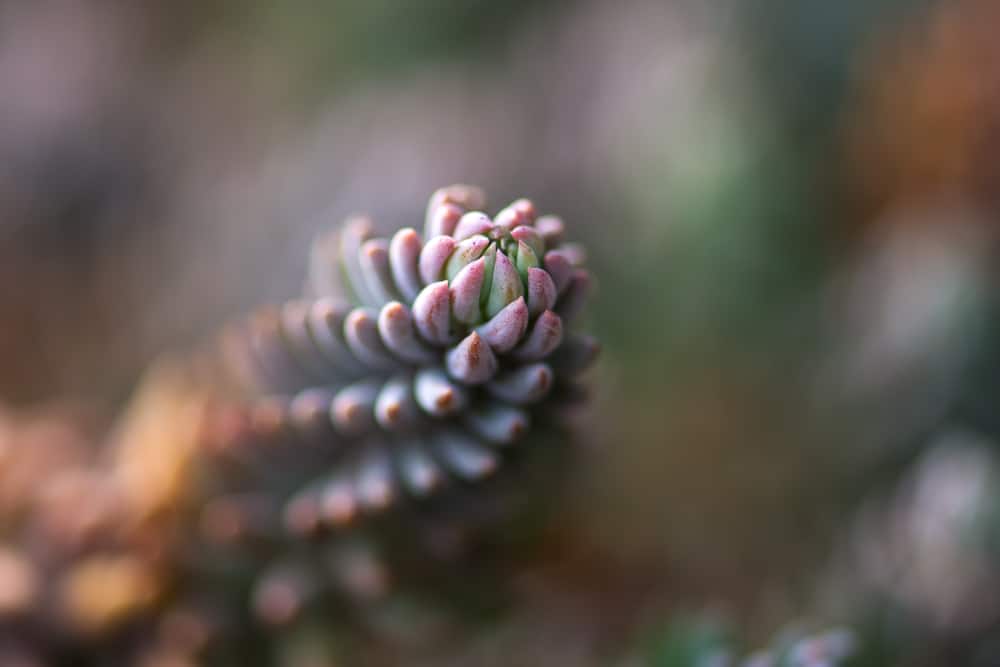
While suggesting any cultivar, in particular, might mean you’ll never see it in stores, Jenny’s Stonecrop finds its way into most cold region nurseries. This incredibly hardy, friendly succulent will fit right into any nook and cranny you happen to have in your yard. A single stem of S. repestre ‘Angelina,’ with its bright golds and lime greens, can spread and take over an otherwise bare patch within a couple of years with minimal to no maintenance. Not enough? Take another stem and plant it again!
Jenny’s Stonecrop is a very easy choice to any gardener looking for a low-maintenance ground cover that handles drought and poor soil well!
If you ever wished you had a garden of tiny evergreen trees, look for S. rupestre or reflexum ‘Blue Spruce’, a cultivar that boasts an uncanny resemblance to miniaturized blue spruces.
- Hardy to Zone 5.
- Evergreen perennial
- Recommended keeping in full sun.
- Maximum size of 6” tall and mats 2’ wide.
- Forms dense mats of fleshy stems.
2. Sedum spathufolium (Broadleaf Stonecrop)
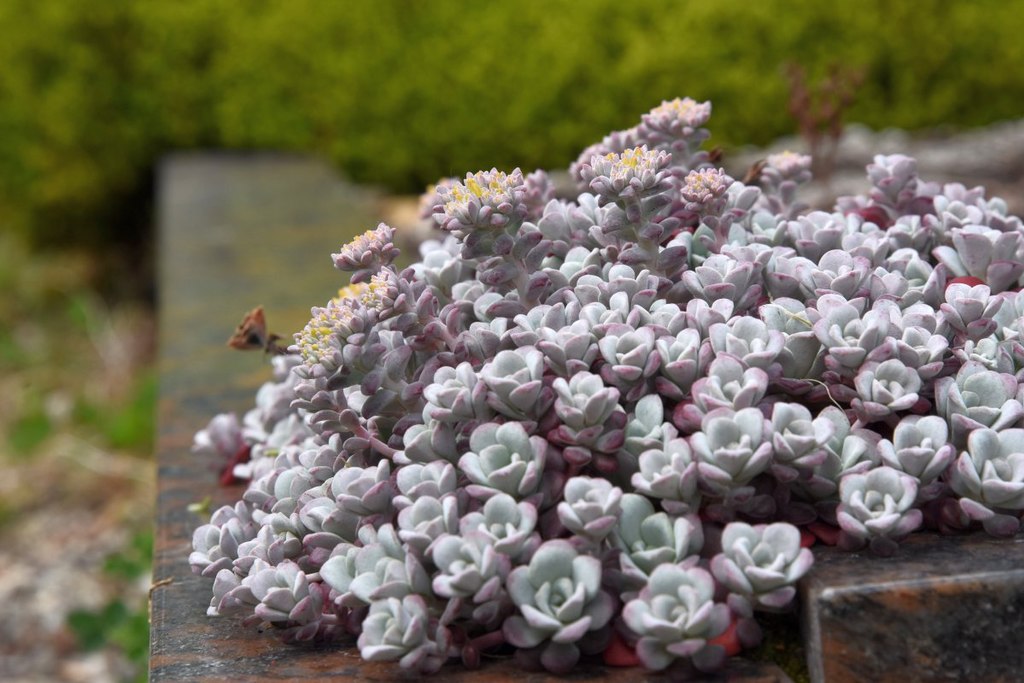
This species of Sedum is actually quite varied and has a large variety of cultivars. While Broadleaf Stonecrop is best known for its plump rosettes topping long stems that form in mats, cultivars may show flatter, rounder leaves as well.
Common cultivars include ‘Cape Blanco’ with unique grays and ‘Purpureum’ with stunning spoon-shaped leaves in purple, blues, and grays.
- Hardy to Zone 3.
- Evergreen perennial
- Recommended keeping in full to partial sun.
- Maximum size of 6” tall and mats 2’ wide.
- Forms dense mats of fleshy stems.
- May not handle wet, freezing winters as well.
3. Sedum Matrona (Matrona Tall Stonecrop)
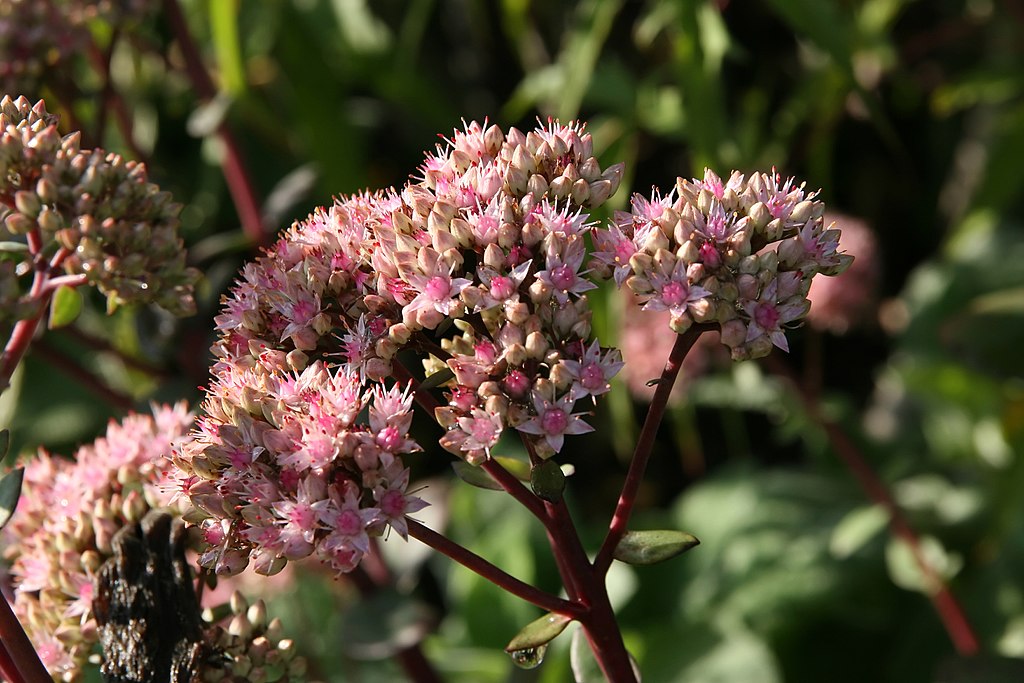
This Sedum offers a contrast to many succulents with its huge growth, great frost tolerance, and large blooms!
Sedum Matrona is more of a bush than the ground cover or hanging baskets Sedum usually offers. It makes a beautiful addition to any garden and, as a member of the Sedum family, is extremely undemanding and forgiving. It blooms in late summer and is known for attracting butterflies with its light pink flowers.
- Hardy to Zone 3.
- Evergreen perennial
- Recommended to keep in full sun but it may thrive in morning sun and tolerate shade.
- Maximum size of 30” tall and 18” wide.
- Form a tall, flowering bush
- Summer blooms attract pollinators and butterflies
4. Sedum sichotense
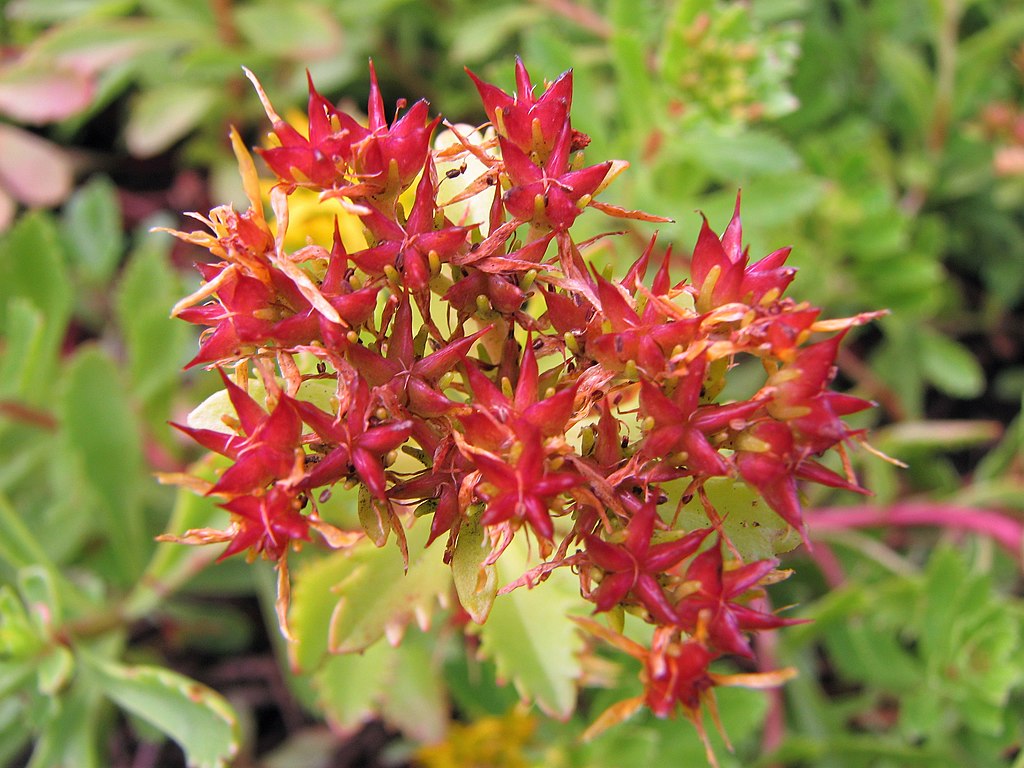
Sedum sichotense forms a truly interesting mat with toothed rosettes on stems!
In addition to having interesting foliage year-round, its foliage is loved for its intense coloring. Foliage begins yellow and becomes green during summer months. These leaves turn crimson in the fall and burgundy in the winter. This is a fantastic choice to add color and texture to your garden even during harsher periods of weather.
Be careful if this is the plant you want. Its only established nickname is ‘Creeping Stonecrop’, which is a vague nickname applying to a plethora of Sedums. This is a case where the scientific name will serve you best.
- Hardy to Zone 4.
- Evergreen perennial
- Recommended keeping in full sun to partial sun.
- Maximum size of 6” tall and spreads 10” wide.
- Extremely colorful foliage.
- Winter dormant
5. Sempervivum (Hens & Chicks)
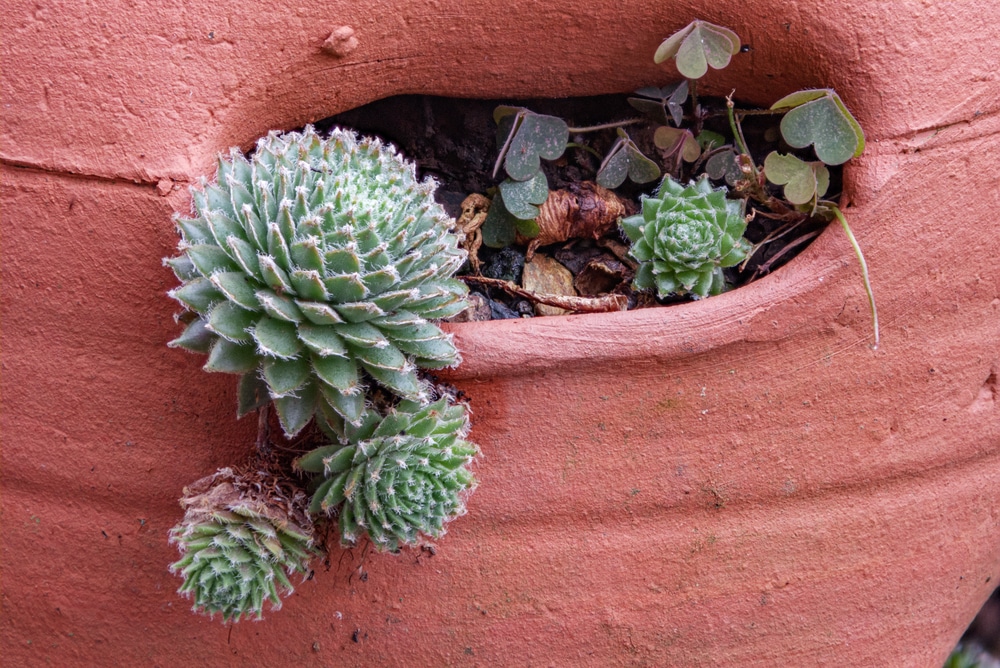
With any Sempervivum, be attentive to their growth. Sempervivum too tightly packed will need to be thinned and spread out to avoid the plants becoming leggy and tall in an attempt to fit. Simply remove excess offsets and plant them away from the main plant to control growth. If you’ve reached maximum Sempervivum, your neighbors and friends may be delighted to take some off your hands (or garden).
6. Sempervivum arachnoideum (Cobweb Houseleek)
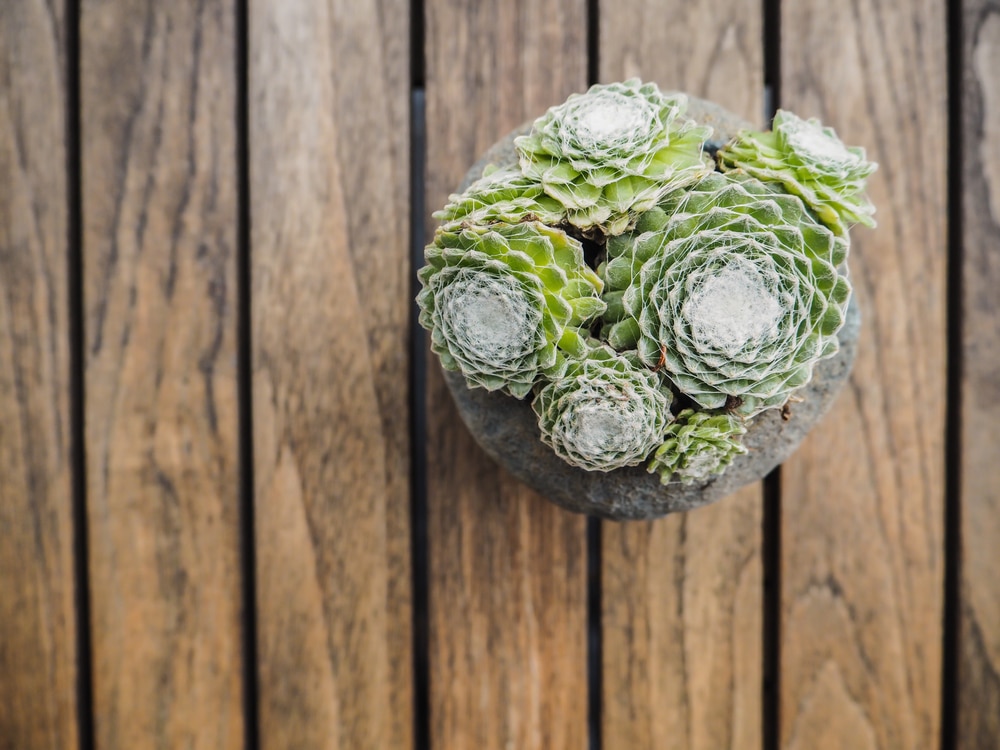
In an incredible array of colors, the arachnoideum, or Cobweb Houseleek, produces fine web-like hairs on its new leaves. With enough leaves, it appears to have a beautiful spiderweb living in the center of it. S. arachnoideum is a hardy, beautiful, and interesting succulent to keep in your yard.
- Hardy to Zone 4-5,depending on the cultivar.
- Evergreen perennial
- Recommended keeping in full sun to partial sun.
- Maximum size of 3” tall and 3-4” wide.
- Forms dense mats
- Winter dormant
7. Sempervivum globiferum (Rolling Hens & Chicks)

These little rosettes carry an adorable and unique feature: They are almost globe shaped! As a new offset is formed at the end of a stolon, it will fall off and roll away to form a new plant. This species of Sempervivum sports a variety of cultivars that may be more green, round, or colorful. S. globiferum is a fabulous addition to any outdoor feature!
- Hardy to Zone 5.
- Evergreen perennial
- Recommended keeping in full sun to partial sun.
- Maximum size of up to 3” tall and 2-3” wide.
- Mat-forming
- Winter dormant
- Prolific offsets
8. Sempervivum tectorum (Hens & Chicks)
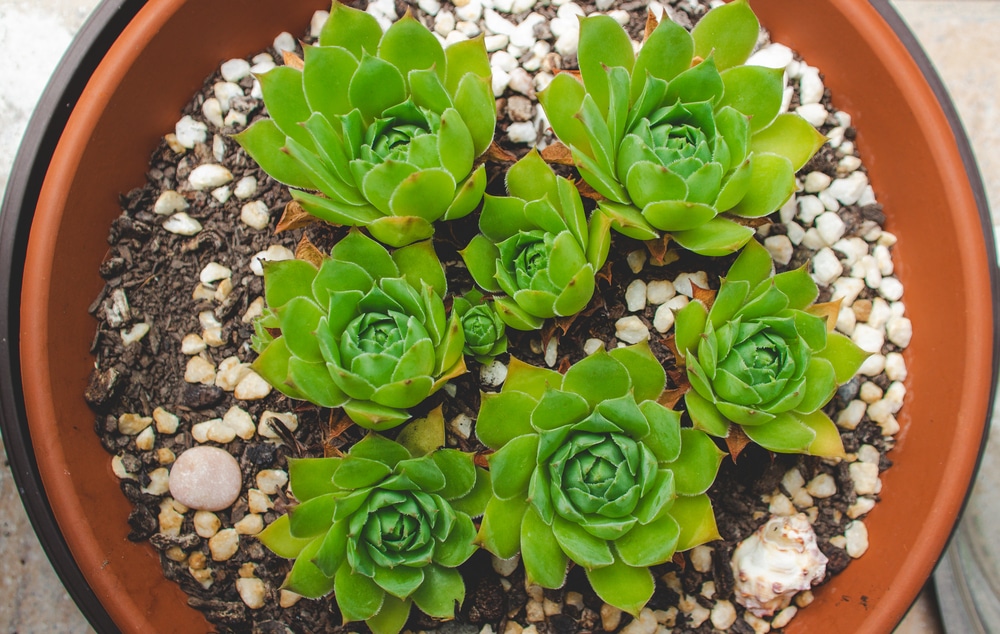
A classic-looking Sempervivum, tectorum comes in hundreds of cultivars in nearly any variety you can imagine. These cultivars are green, pink, or purple in any intensity, with bright colors coming from the base of the rosette or forming on the tips. S. tectorum is what’s most considered when we refer to Hens & Chicks and its history is rooting in subbing in as shingles on roofs. These hardy plants formed stunning roofs that resisted moisture and mold problems.
S. tectorum adds easy, low maintenance color and interest to any garden space. It can grow quite large and make a statement anywhere you place it. Best of all, it is celebrated for its ease of propagation through offsets, seeds, and leaf and stem cuttings!
- Hardy to Zone 3.
- Evergreen perennial
- Recommended keeping in full sun.
- Maximum size of up to 6” tall and 6-12” wide.
- Forms large rosettes
- Winter dormant
9. Sempervivum ‘Neptune’ (Chick Charms® Silver Suede)
This Sempervivum makes a wonderful gift to share and a beautiful garden gem! Its fuzzy, velvety leaves sport silver to pink shades in the spring and summer. The hotter the temperatures, the more silver and lighter colors it displays. Once temperatures swing cooler for the fall and winter, it takes on lavender and crimson coloring.
This Sempervivum is happy to propagate with plenty of offsets! Buy it for yourself and share it with its admirers. Normally named Sempervivum ‘Neptune’, it may be found in a nursery’s Chick Charms® collection under the name Silver Suede.
- Hardy to Zone 3.
- Evergreen perennial
- Recommended keeping in filtered or partial sun to full sun.
- Maximum size of up to 2-3” tall and rosettes 5-6” wide.
- Produces pink blooms and stunning leaves.
- Winter dormant
Stand-out examples
These species break apart from the pack of the more commonly found Sedum and Sempervivum but are still exceptionally hardy and will be happy to join your outdoor garden full-time! In some cases, their whole genus may have many species that are frost-hardy, but most of these are exceptions. In addition, they’re more unusual options for outdoor gardening.
10. Delosperma cooperi (Ice Plant)

This succulent isn’t as well-known for its chubby, succulent leaves, or even for being a succulent. Instead, most people recognize this common and hardy plant for its neon-pink blooms, which it produces prolifically!
Plenty of gardeners, not realizing it is a succulent, find it doesn’t do well in the garden near sprinklers in high-quality gardening soil.
If you’ve ever kept this plant and struggled, rejoice! Try again! Place the Ice Plant in a nutrient-poor, rocky area of the garden, neglect it a little, and enjoy its vigorous growth and constant blooms throughout the growing season.
- Hardy to Zone 5-6 depending on your region.
- Herbaceous perennial in cool climates; evergreen in warm climates
- Recommended keeping in full sun.
- Maximum size of 6” tall and mats 2’ wide.
- Forms dense mats of fleshy leaves decorated with bright, round daisy-like blooms.
11. Opuntia compressa (Prickly-Pear)

If you’ve ever dreamed of a more desert-like design in your garden, the prickly pear is here to make the statement for you! Prickly pear is winter hardy, drought-hardy, clay-tolerant, and even edible! For a garden participant that is truly unusual, this one takes the cake and will stick around for years—though, it may also stick you, so be cautious around it.
Prickly pear pads can be cut and, once calloused over, planted to produce a new prickly pear. Since they are sold in grocery stores as the whole pad, many gardeners have had success rooting these pads! There are many varieties of prickly pear as well, so you can learn to identify the kinds in your local stores to see if it’s one you’d like.
Opuntia boasts many beautiful species that are cold hardy as well.
- Hardy to Zone 4.
- Evergreen perennial; pads will become thin during winter
- Recommended keeping in full sun.
- Maximum size of 1’ tall and 1-2’ wide.
- Produces edible and easily propagated pads.
12. Euphorbia myrsinites (Myrtle Spurge, Creeping Purge, Donkey Tail)

Can a succulent be a weed? Yes, definitely.
Even in a cold climate? Absolutely!
Myrtle Spurge is a hardy, flowering succulent that hikers in the western US likely know well. It’s hard to tell from a distance that it is a succulent, but it’s easy to recognize with its bountiful yellow blooms.
E. myrsinites is classified as a Class A noxious weed in Colorado, where it is wanted dead rather than alive. Owners are legally required to remove any in their yards. In Oregon, it is subject to quarantine. In Salt Lake County, Utah, it is illegal to sell and must be contained and controlled or eradicated.
All the rage comes from its extremely toxic sap that causes severe skin irritations and, if swallowed, causes stomach distress. Any work with it should involve a hazmat set of long sleeves, gloves, solid-toe shoes, and eye protection. In addition, it’s very difficult to control: These blooms can spread seeds up to 15 feet.
If it’s not invasive in your area, you’re hoping for a plant that’s harder to control than kill, and you like a challenge, you can enjoy its beautiful foliage and bright yellow to orange blooms. Its foliage grows in creeping stems that form interesting spirals of leaves turning from yellow to green.
Native to Eurasia, this plant was brought over for a reason: It’s very attractive and hardy.
- Hardy in Zones 4-8.
- Herbaceous perennial; evergreen in warm climates
- Recommended to keep in full sun; loves the heat.
- Maximum size of 8-12” tall and mats 12-18” wide.
- Controlled by removing blooms prior to seeding and chemical control. Give up? Removing at least 4” of the root should prevent it from returning.
13. Agave parryi (Parry’s Agave)
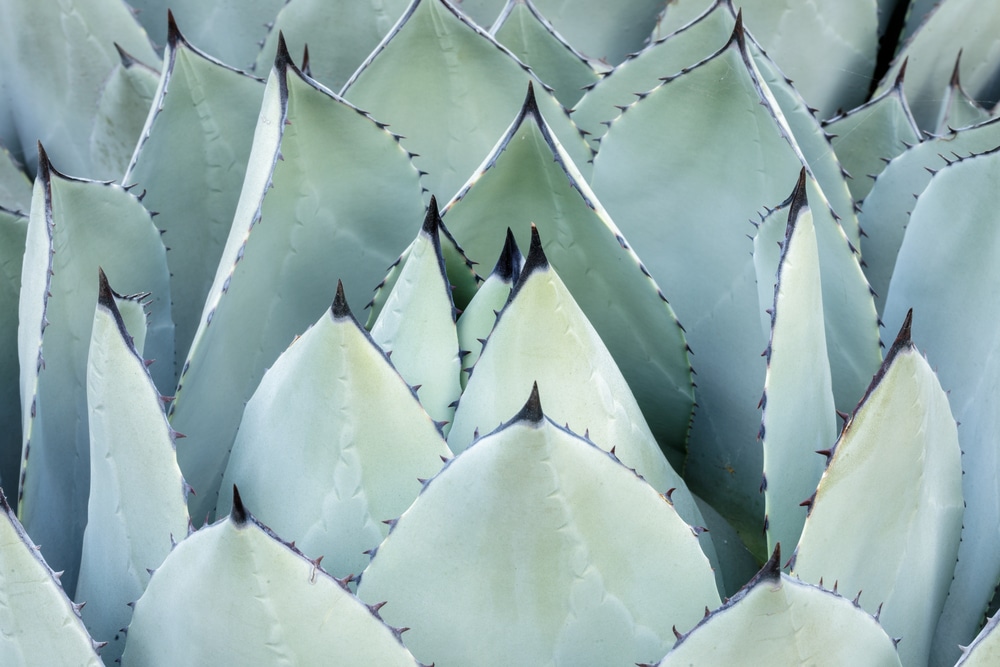
For a truly stunning Agave that can handle harsh winters and produce foliage that will always amaze you, Parry’s Agave is an easy choice. Coming from Arizona and New Mexico, it is well adapted to the dryer and hotter climates but carries the hardiness to handle a cold winter. Agave is monocarpic, so expect them to pass once they bloom; keep a few of its pups around throughout the years to continue its legacy.
Parry’s Agave is a slow growing, small Agave that will live for about 25-50 years before blooming. Generally, A. parryi’s foliage will be silver and blue. A parryi comes in a variety of cultivars, with the most popular type being ‘truncata’ (Artichoke Agave) which features more pronounced spiked tips resembling an artichoke plant.
Its blooms grow on stalks that can reach 20 feet tall. In its native regions, catching them in the wild blooming is a truly spectacular sight with their large yellow blooms on extremely tall stalks.
- Hardy to Zone 3.
- Evergreen perennial
- Recommended keeping in full sun.
- Maximum size of up to 6” tall and 6-12” wide.
- Forms large rosettes
- Winter dormant
14. Orostachys spinosa (Spiny Pennywort)

In the realm of a little more care and a little rarer, the Spiny Pennywort brings something truly unique to a garden. Closely related to Sedum and but resembling Sempervivum, Orostachys features a variety of rosette species that are all very distinct from another.
Spiny Pennywort grows a tight rosette crowned with thick, fleshy leaves around the base. This is a monocarpic species that will do best in the garden where its racemes can be used to keep its cluster going for years after the original plant blooms and passes on.
This is a fantastic and beautiful plant for a dry, sunny area in your yard. They prefer shallow soil and make a great candidate for outdoor arrangements.
- Hardy to Zone 2.
- Evergreen perennial
- Recommended keeping in full or bright sun.
- Maximum size of up to 3” tall and 6-12” wide.
- A rare plant whose genus forms cone-shaped flowers earning the nickname ‘Dunce caps’
- Winter dormant
15. Hesperaloe parviflora (Texas Red Yucca)
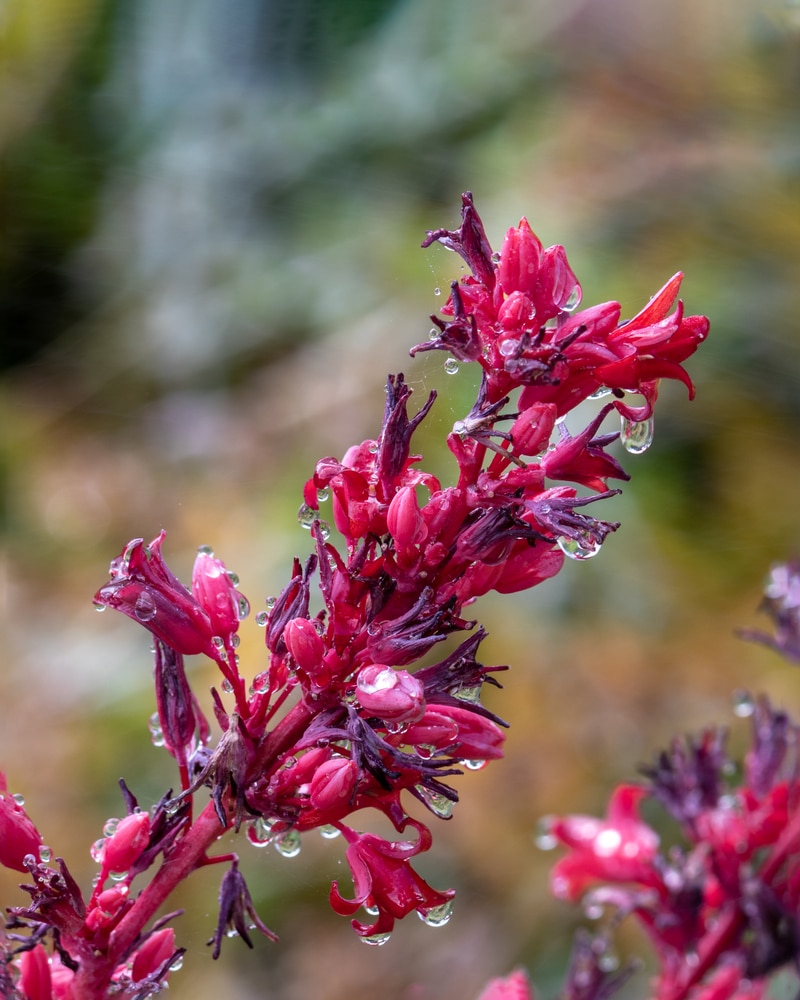
If you’ve passed by this succulent without taking a very close look, you probably never notice it’s a succulent! The Texas Red Yucca forms long, needle leaves that mound like grass, fooling the best of us into believing it’s a grass.
This succulent is loved for its bright, showy pink and red flowers that attract humminbirds! If you’ve been dodging growing ornamental grasses or just want something to encourage hummingbird visits, the Red Yucca is a fabulous choice. It’s beautiful to birds, pollinators, and people alike with the hardiness and ease of care of a succulent.
This is a monstrous succulent that may take 2 to 3 years to begin blooming for summertime.
- Hardy to Zone 5.
- Evergreen perennial
- Recommended keeping in full sun.
- Maximum size of up to 5’ tall and reaches up to 6’ wide.
- Resembles a tall grass and produces stunning blooms
- Winter dormant
Choosing and Placing your Succulent
Most hardy succulents are going to demand the same care a frost-tender succulent will ask. Full sun in most cases, with morning sun for less heat-tolerant varieties. Choose a rocky area with great drainage that won’t be watered too frequently. Once you know what areas you want to fill, you can decide what size of succulent you like. If your space is larger, you can choose one very big succulent or pick multiple smaller ones that will fill in the space over time.
For monocarpic species, plan to give them a little extra space so you can propagate them in advance.
You can also choose “annual” succulents that won’t overwinter in most zones. You may only need to buy them once and allow them to reseed the next year (Portulaca oleracea will reseed itself). However, you may be best off buying new plants for many frost-tender varieties. Otherwise, fast-growing succulents such as moss rose can be purchased as seeds and sprouted in late winter or early spring for summertime blooms. Moss rose will sometimes reseed itself as well.
If you’ve picked a hardy succulent while shopping, make sure your candidate’s tag specifies more than “perennial.” Otherwise, you’ll want to verify independently. It might be a great perennial if you were one zone warmer but pass away in yours since garden tags aren’t always prepared for your region.
Once you have your frost-hardy succulents chosen and planted, you can plan to enjoy their company and colors for many years to come!

